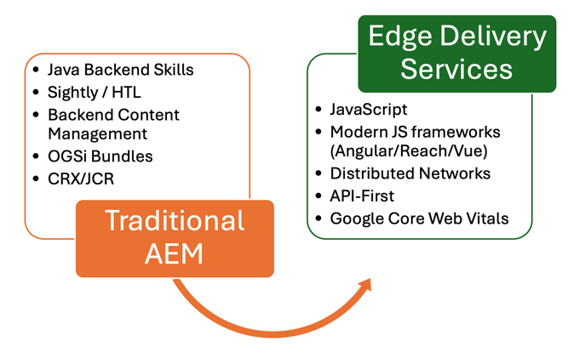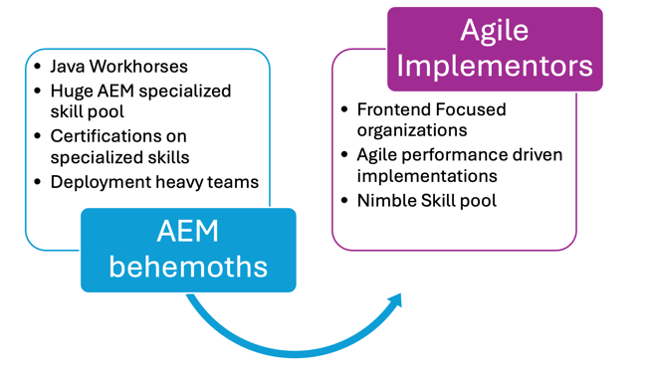In an era where rapid content delivery and exceptional user experiences are paramount, traditional methods are falling short. Adobe's Edge Delivery Services offer a next-generation solution that moves content closer to users, ensuring seamless digital experiences.
Adobe’s new Edge Delivery Services (EDS) revolutionizes content delivery architecture by transitioning from centralized to decentralized, edge-based infrastructure. This approach emphasizes speed and proximity, delivering content directly to users for faster load times. For faster loading experiences, EDS is the ideal solution for businesses seeking seamless high-speed content delivery, while ensuring global scalability and enhanced user experience.
"This shift brings significant implications for System Integrators (SIs)"
Traditionally, implementing Adobe Experience Manager (AEM) demanded extensive backend expertise, heavily reliant on its intricate infrastructure. EDS, however, opens up new avenues for SIs specializing in frontend technologies, headless architecture, and API-driven development. This edge-based model emphasizes proficiency in JavaScript, distributed networks, and modern frameworks, rather than traditional AEM backend skills, democratizing the AEM landscape and empowering smaller, agile SIs to compete with larger, established players.
EDS leverages an API-first, edge-based delivery approach to optimize content delivery by pushing it closer to the user, right to the edge of the network. This significant shift requires a different skill set and presents new optimization opportunities compared to traditional AEM infrastructures. For instance, while AEM giants traditionally prioritized deep expertise in backend content management, EDS demands a combination of front-end skills and knowledge of distributed network management. This shift empowers System Integrators (SIs) specializing in front-end development, APIs, and agile, headless architecture to compete directly with traditional AEM firms.

"This leads to a Shift in Skills Requirements"
EDS's emphasis on modularity has elevated the importance of front-end and API-driven skills. This architectural shift democratizes the AEM landscape by empowering SIs with strong front-end expertise and lean teams to deliver high-performing, scalable content solutions, without requiring the deep AEM-specific backend expertise that once set traditional AEM providers apart. EDS also empowers SIs to leverage their strengths in JavaScript, API integrations, and modern front-end frameworks to build and deploy rich, interactive experiences that cater to the high-speed demands of today's users.
A New Era of Competition
"This shift gives SIs specializing in headless and frontend technologies a competitive advantage in the EDS era."

They can deliver streamlined, API-based digital solutions efficiently, resulting in faster implementation times and cost savings. Unlike the traditional AEM approach, which heavily relied on backend and repository management, EDS enables these newer entrants to directly innovate the client’s experience, backed by powerful edge-optimized performance.
Conclusion
In essence, EDS sets a new standard for content delivery. By reducing the dependency on complex AEM infrastructure, EDS empowers System Integrators with robust front-end capabilities to deliver high-value, scalable solutions and compete directly with established AEM providers.
This opens the door for a broader spectrum of SIs, including those previously hindered by AEM’s backend complexity, to enter and thrive in the digital experience market.






